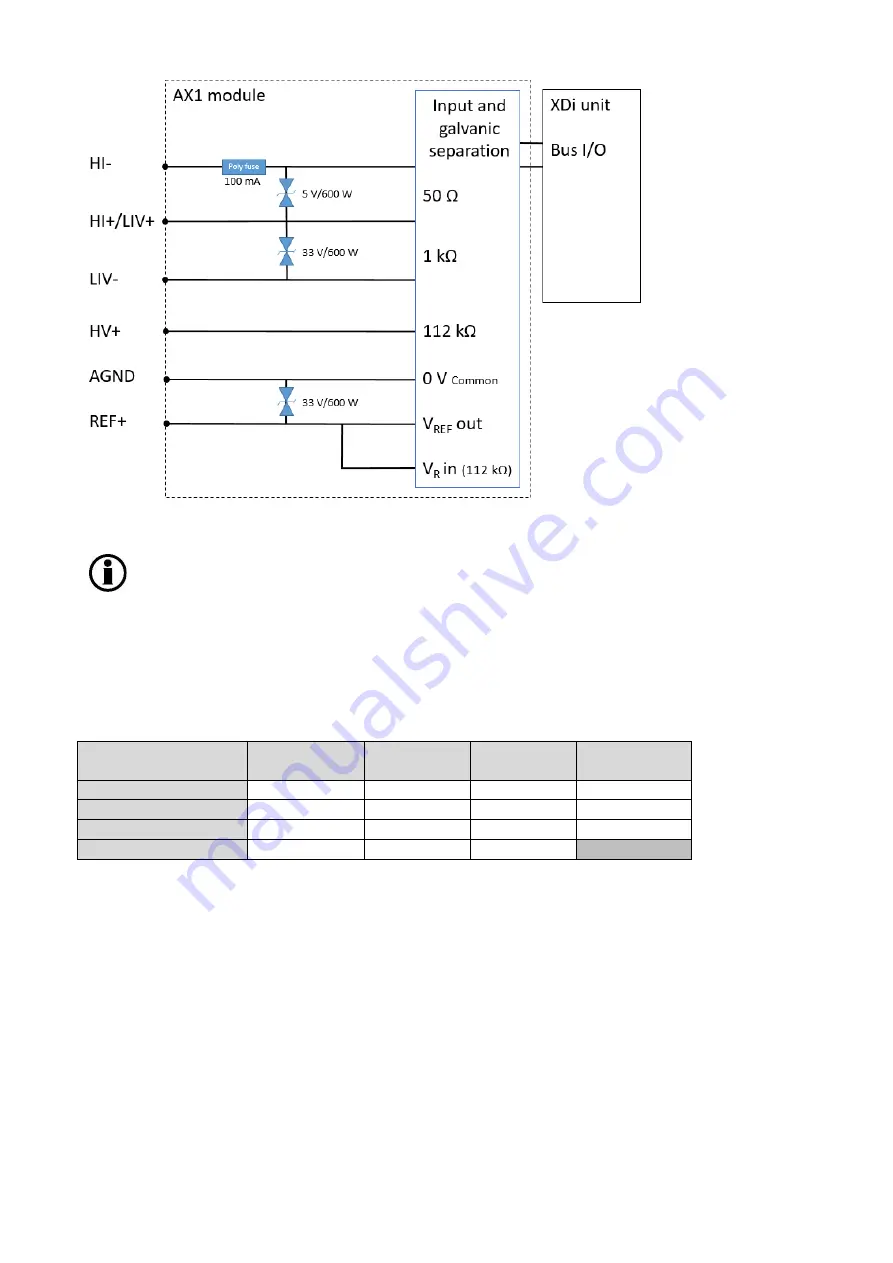
DESIGNER’S HANDBOOK 4189350049C EN
Page 60 of 206
5.6.7
Common mode rejection
The common mode potential between inputs and from one input to the analogue common/ground terminal (AGND)
must not exceed:
AX1 Inputs:
High current
input 1
Low current
input 1
Low voltage
Input 1
Analogue
GND
High current input 2
+/-30 V
+/-30 V
+/-30 V
+/-15 V
Low current input 2
+/-30 V
+/-30 V
+/-30 V
+/-15 V
Low voltage input 2
+/-30 V
+/-30 V
+/-30 V
+/-15 V
Analogue GND
+/-15 V
+/-15 V
+/-15 V
Common mode voltage will slightly affect the measurements, but within the limits above, the impact will be less
than 0.3 % and the overall accuracy will be within class 0.5.
If a common mode voltage between a differential input and AGND exceeds 20 V, the input circuit will be forced out
of range, and the measurement will no longer be valid.
Therefore, when more than one type of input is used, it is important to carefully consider the common mode
situation.
Analogue current inputs to the AX1 module sometimes come from different devices that are more or less galvanic
separated and maybe sourced from different power supplies. This may introduce a DC offset, hum and/or electrical
noise between the individual input terminals, and also from the inputs to the common analogue ground terminal.
This type of common mode interference may disturb the measurements made by the AX1 module.
Connecting the AGND (common) to the common terminals on the analogue sources is a way of eliminating such
common mode disturbances.
I/Os on the same AX1 module are not galvanic separated, and therefore common mode must
be carefully considered when more than one input is used.
















































